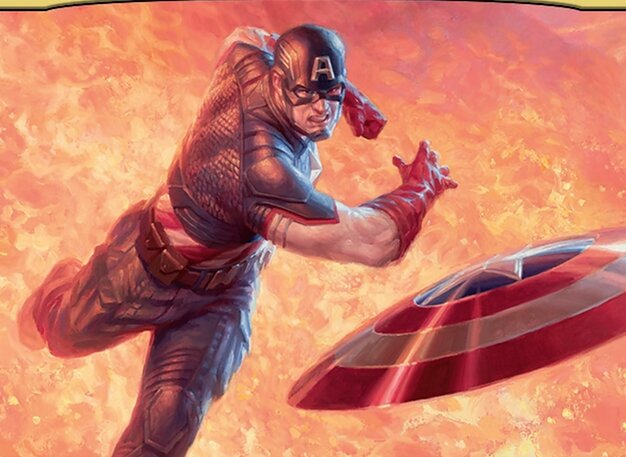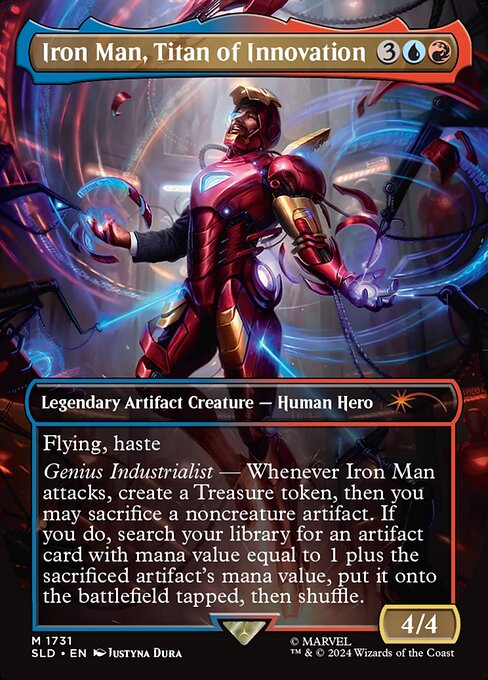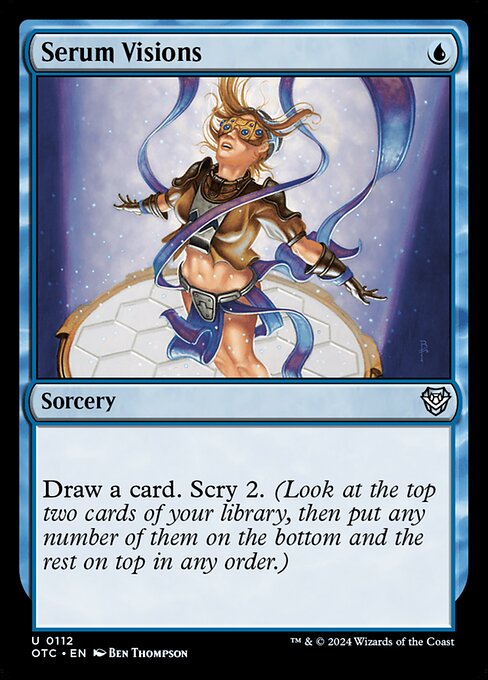Deck & Commander Strategies

Iron Man, Titan of Innovation
An artifact-focused Voltron deck that generates treasure tokens and sacrifices smaller artifacts to cheat out bigger, more powerful artifacts, aiming to win through heavy flying damage.

Captain America, First Avenger
A Voltron equipment deck that attaches and reattaches equipment each turn to boost Captain America's power and use his ability to deal damage by throwing equipment, focusing on incremental board control and damage.
Ryu, World Warrior
An aggressive Boros deck that ramps mana and utilizes Ryu's training ability to grow stronger through combat with larger creatures, aiming for consistent damage and card advantage from combat triggers.
Blanka, Furious Friend
A fast, spell-heavy aggro deck that casts multiple spells per turn to trigger Blanka's trample and damage abilities, using burn effects and card draw to maintain pressure and close out the game quickly.
Gameplay Insights
- 1
The synergy between Ryu's training ability and Ken's larger creatures allowed Ryu to consistently grow stronger during combat, increasing pressure on opponents.
- 2
Iron Man's ability to generate treasures and sacrifice artifacts to cheat out bigger artifacts allowed for quick board development and resilient threats in the air.
- 3
Captain America's free equipment attachment at the beginning of combat enabled flexible and repeated boosts, facilitating both offense and defense.
- 4
Blanka's reliance on casting multiple spells per turn to trigger trample and damage effects created a high-tempo, aggressive strategy that challenged the Marvel team's slower artifact assembly.
- 5
Two-headed giant format rules, such as shared life totals and simultaneous turns, influenced the importance of team coordination and targeting choices during combat and spells.
Notable Cards
-

Iron Man, Titan of Innovation
-

Captain America, First Avenger
-

Wayfarer's Bauble
-

Serum Visions
-

Evolving Wilds
Gameplay Summary
The game featured a two-headed giant format with two teams: Iron Man and Captain America versus Ryu and Blanka.
The Street Fighter team aimed for aggressive combat strategies, using Ryu's ability to grow stronger with each attack alongside Ken's larger creatures to maximize damage output.
Blanka added a fast, spell-heavy approach, leveraging multiple spells per turn to increase his power and deal damage with trample and triggered burn effects.
On the Marvel side, Captain America focused on a Voltron-style equipment strategy, aiming to attach and reattach powerful artifacts to boost his combat potential and control the board.
Iron Man pursued an artifact combo plan, creating treasure tokens and sacrificing smaller artifacts to cheat larger ones onto the battlefield, aiming to dominate the air with flying threats and high-impact artifact creatures. Early turns saw the teams ramping and setting up their synergies, with the Street Fighter team ramping mana to fuel their aggressive plays and spellcasting, while the Marvel team prioritized assembling equipment and artifact combos.
Key moments involved Iron Man generating treasures and escalating artifact plays, while Captain America utilized his equipment-attachment ability to amplify his damage output.
The Street Fighter team maintained pressure through Blanka's damage triggers and Ryu's evolving power counters, creating tension in combat.
The game highlighted the contrast between aggressive creature-based combat and artifact-driven Voltron strategies, with both teams maneuvering for board control and lethal attacks.
Ultimately, the dynamic between artifact recursion and spell-triggered damage defined the flow of the match.







![Which Commander Reigns Supreme Ironman, Garna, Ghave, or Yennett? #mtg #edh #mtggaming [EDH] thumbnail](https://i.ytimg.com/vi/z_5DOdCCaOg/sddefault.jpg)
![Ep 1: Jarred v Jedit v Elas v Jaxis commander / [EDH gameplay] thumbnail](https://i.ytimg.com/vi/fOXepOqTRcA/sddefault.jpg)
!["Battle of the Commanders" EP: 2 Anje vs Zur vs Jedit vs Phabine [EDH Gameplay] thumbnail](https://i.ytimg.com/vi/ZmDQKhu_A_M/sddefault.jpg)
!["4 Player Commander Showdown "- Ep: 3 Hazezon v Dihada v Willowdusk v Raffine [EDH Gameplay] thumbnail](https://i.ytimg.com/vi/BiDOJLw7a3I/sddefault.jpg)
![All will be one! EP: 4 Prosper v Neyali v Ixhel v Karumonix [EDH gameplay] thumbnail](https://i.ytimg.com/vi/1rB3FW952-4/sddefault.jpg)
![Ep: 5 Tawnos v Yuriko v Purphoros v Urza [EDH gameplay] thumbnail](https://i.ytimg.com/vi/ovuvwBzAQ1U/sddefault.jpg)
![Ep: 6 Myrel v Liesa v Kess v Falco [EDH gameplay] thumbnail](https://i.ytimg.com/vi/Au02HpcLJGA/sddefault.jpg)

![Ep: 8 Xira v Atraxa v Goblinson v Akiri [EDH gameplay] thumbnail](https://i.ytimg.com/vi/vRfqRDjvoXs/sddefault.jpg)















![Avengers Civil War, ft. Captain America, Black Panther, Iron Man, Wolverine [EDH/Commander Gameplay] thumbnail](https://i.ytimg.com/vi/GL-1FahPwlI/sddefault.jpg)








